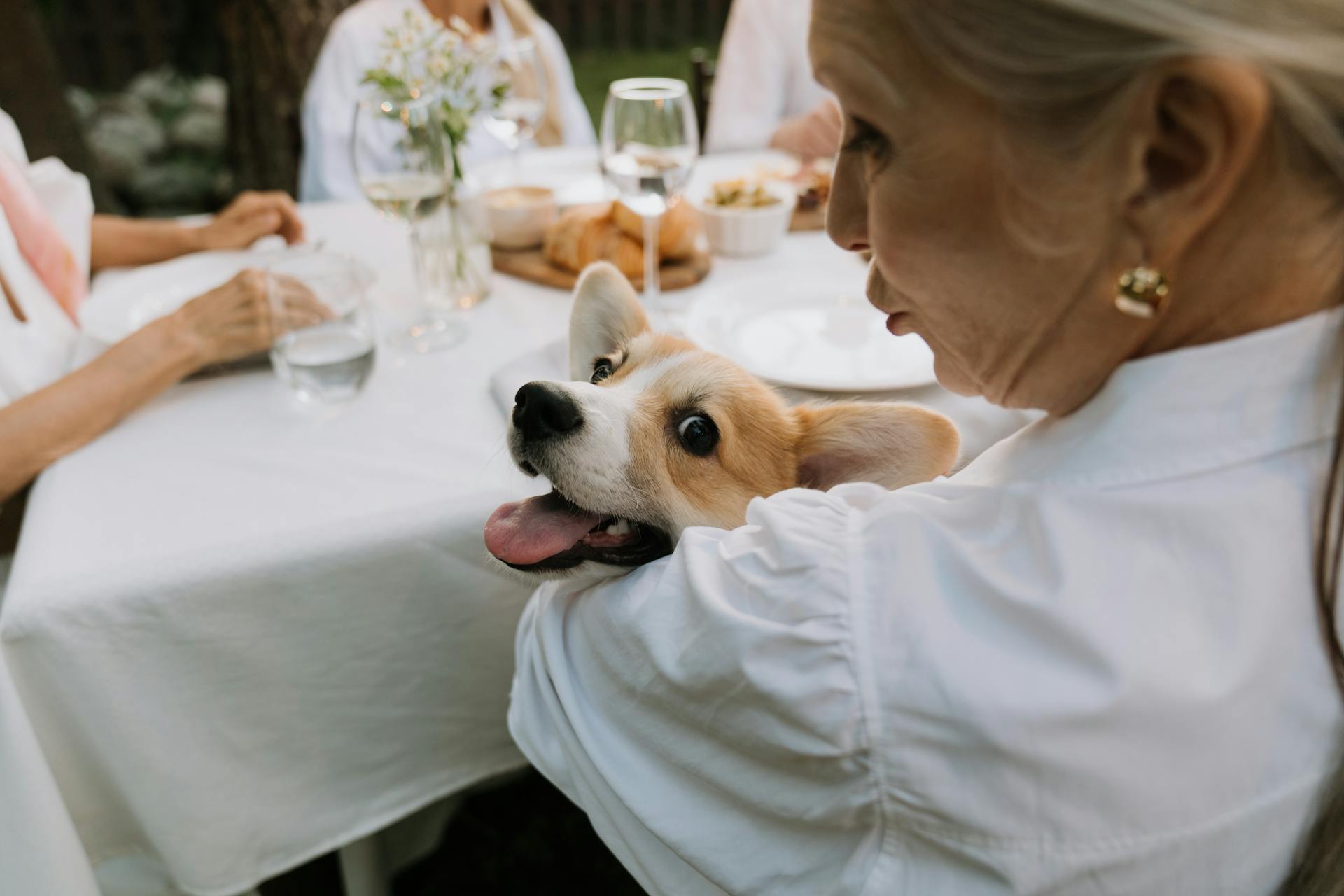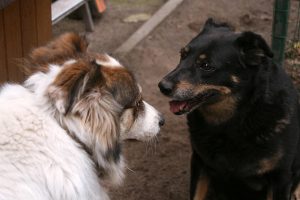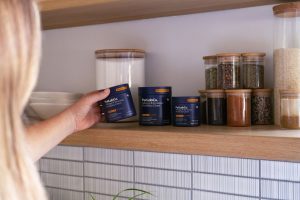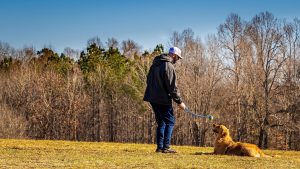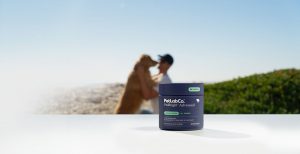Thanksgiving morning starts at 6 a.m. in my kitchen. The turkey goes in the oven. Potatoes need peeling. My Jack Russell Terrier, Milo, an eight-year-old male with more energy than sense, watches everything from his spot near the counter.
Several years ago, by 10 am, I would feel exhausted from telling no, don’t jump on the counter, leave it, or anything similar.
I would have spent the entire day managing problems and correcting his behavior. At the end, I would feel like I was failing at dog ownership. Even Milo was stressed due to everything that happened in the house. I was stressed as well.
But if you like your dog to enjoy holidays as much as you do, you have to put in the work. So that is what I did. And it all started with a simple realization that most owners do not even pay attention to.
Try to answer this as honestly as possible. When was the last time you gave your dog a treat, just for lying quietly on his mat? Well, that treat can change everything about your home. Read on to find out how.
The power of catching them being good
I’ve lived with dogs for most of my life. Growing up, we always had at least one dog in the house. I learned early that dogs respond to what gets their attention. If you yell when they jump, they learn that jumping gets a reaction. If you ignore calm behavior, they learn that calm behavior is invisible.
The problem is that our brains are wired to notice problems. I did this early when I got Milo. When he was lying quietly, I didn’t think about it. I was focused on doing other things around the home. But here is the dirty little secret.
Dogs repeat behaviors that get rewarded. The reward doesn’t have to be a treat. Sometimes the reward is just attention. Even negative attention can reinforce behavior if it’s the only attention a dog gets.
When I started catching my dog being good, I wasn’t inventing a new training method. I was applying something I’d known for years but kept forgetting in the chaos of daily life. Good behavior was happening constantly. I just wasn’t noticing it.
What good moments look like on Thanksgiving
Good moments are easy to miss because they’re quiet. Here’s what I started noticing once I paid attention:
My dog lying calmly while I chop vegetables. This happens multiple times during food prep, but I never acknowledged it before. Now I drop a small treat near his mat every few minutes when he’s relaxed.
Walking past the coffee table without grabbing the cheese plate. Every dog has done it. Snagging something off the table before you catch them. But now, every time Milo walks past food without touching it, he gets verbal praise at minimum.
Greeting a guest with four paws on the floor. My Jack Russell’s natural instinct is to launch himself at anyone who comes through the door. When he sits instead, even for two seconds, that’s worth a treat.
Settling quietly during dinner. He doesn’t have to be perfect. If he’s on his mat and not whining or pacing, I’ll toss him a small piece of plain turkey when no one’s looking.
Ignoring dropped food. This is the hardest one. When a piece of sweet potato hits the floor and he looks at me instead of lunging for it, that’s a massive win.
These moments happen dozens of times throughout the day. Before I started paying attention, I missed all of them.
Why do we miss good moments
Good behavior is invisible because it doesn’t demand attention. When my dog is calm, I can focus on cooking, talking to guests, or pouring wine. When he’s jumping on the counter, I have to stop everything and address it.
This creates a weird pattern where problem behavior gets 100% of our focus and good behavior gets none. From the dog’s perspective, acting out is the only way to get noticed.
I’ve also noticed that dog training culture leans heavily on correction. We talk about what dogs shouldn’t do. Don’t jump. Don’t beg. Don’t bark. We spend less time talking about what they should do and even less time rewarding when they do it.
The shift required me to actively hunt for good moments. Here is a simple trick you can use. Set up a timer on your phone for every 20 minutes. When the timer goes off, stop what you are doing and look for something your dog is doing right. You can find something within seconds. Reward it.
How to reward in the moment
I keep treats in my pockets all day on Thanksgiving. Small, boring treats work fine. I use pieces of his regular kibble or small training treats. The point isn’t to throw a party for every good moment. The point is to mark the behavior so he knows I noticed.
Verbal praise counts more than I used to think. My Jack Russell reads my energy closely. When I say “good boy” in a genuine, warm tone, his ears perk up and his tail wags. He knows he did something right.
Physical affection works for calm moments. If he’s settled on his mat and I walk by, I’ll crouch down and scratch behind his ears for a few seconds. This rewards the calmness without revving him up.
Life rewards are the most powerful. If my dog is lying calmly and I’m about to let him outside, I release him from his mat and immediately open the door. Calm behavior earned what he wanted. If he’s settled during dinner and I’m about to give him his evening meal, I feed him right after. The good behavior led directly to something valuable.
Timing matters. I reward within two or three seconds of the behavior. If I wait five minutes, he won’t connect the treat to what he did. Dogs live in the present moment. The reward has to happen in the present too.
The ripple effect
When I started catching my dog being good, my stress dropped immediately. I wasn’t spending the day braced for the next problem. I was looking for opportunities to reward him. That shift in my own mindset changed the energy in my house.
My dog’s confidence grew. He started offering calm behavior more often because it was finally getting him something. Instead of trying everything to get my attention, he learned that lying quietly was the fastest path to treats, praise, and what he wanted.
Our bond got stronger. Training isn’t just about obedience. It’s about communication. When I reward good moments, I’m telling my dog that I see him, I appreciate him, and he’s doing exactly what I need him to do. That builds trust.
The biggest surprise was how much good behavior increased. My Jack Russell isn’t a naturally calm dog. He’s a terrier. He was bred to hunt rats and dig holes. But when I started rewarding calmness, he offered it more often. What gets rewarded gets repeated.
Last Thanksgiving, I caught him being good 47 times throughout the day. I kept a tally on a notepad in the kitchen. By the end of the night, he was offering calm behavior without me asking for it. He’d settle on his mat, look at me, and wait. He’d figured out the game.
A Thanksgiving challenge: start today
Don’t wait until Thanksgiving morning to try this. Start now.
Commit to catching 20 good moments each day between now and Thanksgiving. Set reminders on your phone if you need to. Make it a deliberate practice.
Build the habit now so it’s natural on the big day. By Thanksgiving, you won’t need reminders. You’ll automatically notice when your dog is doing something right.
Share the practice with family members. If your kids or partner are home, make it a group effort. See who can catch the most good moments in a day. This gets everyone focused on positive behavior instead of waiting for problems.
Track your progress. Write down what you’re rewarding. You’ll start to see patterns. Maybe your dog is calm in the mornings but struggles in the evenings. Maybe he’s great with family but anxious around new people. Tracking helps you understand where to focus your training.
By Thanksgiving, both you and your dog will be prepared. He’ll understand that calm behavior gets rewarded. You’ll have built the muscle of noticing good moments even when you’re busy. This isn’t cramming the night before a test. This is building a foundation.
The gift of attention
What we pay attention to grows. If I spend all day noticing my dog’s mistakes, I’ll see nothing but problems. If I spend all day catching him being good, I’ll see a dog who’s trying hard to figure out what I want.
The most powerful training tool isn’t a correction. It’s recognition. When I notice the good moments and reward them, I’m not just training my dog. I’m training myself to see what’s working instead of fixating on what’s not.
This year, catch the good moments. Your dog is already offering them. You just have to look.


